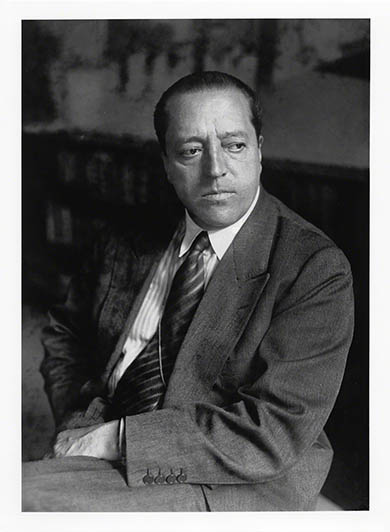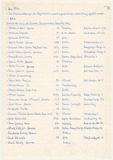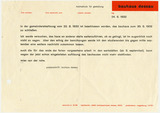Ludwig Mies van der Rohe(Ludwig Mies)
Ludwig Mies van der Rohe(Ludwig Mies)
Daneben muss ich nun doch ob ich will oder nicht englisch lernen. Das geht langsam da wir immer neue Dinge zu bearbeiten haben die uns zwingen schnell und scharf zu lenken. Das aber können wir nur auf deutsch.
[Now I will have to learn English whether I want to or not. It's going slowly because we are always having to work on new things that force us to respond quickly and decisively. But we can only do that in German. (ed. trans.)]
Ludwig Mies van der Rohe in a letter to Elfriede Hofer, 29 November 1938
| Born | on 27 March 1886 in Aachen, Germany |
|---|---|
| Died | on 17 August 1969 in Chicago, USA |
| Exile | United States of America, Federal Republic of Germany |
| Profession | Architect, Designer |
In Germany the number of viable jobs for him had declined since the assumption of power by the National Socialists and the closure of the Bauhaus, which Ludwig Mies van der Rohe was director of between 1932 and 1933. He could no longer equal his former successes such as the exhibition pavilion for the World Expo in 1929 in Barcelona. He was still earning royalties from his furniture patents, such as the MR chair and the Barcelona chair, but the larger orders had dried up.
In inverse proportion to this, however, was the rising interest in Mies van der Rohe's architecture in the United States, where he was represented at the exhibition of Modern Architecture in 1932 thanks to the initiative of the curator of the Museum of Modern Art, Philip Johnson. Mies travelled to the United States in 1937 to design a detached house, the Resor House in Jackson Hole. However, the design was never realised. A year later he was appointed head of the Architecture Department of the Armour Institute of technology, which in 1940 became the Illinois Institute of Technology and whose new campus he designed. He taught for twenty years after emigrating in 1938, but he also had his own architectural practice in Chicago. During his time in the United States Mies van der Rohe designed more than a hundred buildings. Between 1941 and 1945, restrictions imposed on the construction industry following the entry of the United States into the War prevented many projects from being built.
After the end of the Second World War, Mies van der Rohe gained in importance as an architect. The success of his high-rise architecture lies in its modern design as well as its efficient and low-cost construction.
Selected works:
Farnsworth House, Plano (1945-1950)
Lake Shore Drive Apartments, Chicago (1948-1951)
Crown Hall des Illinois Institute of Technology, Chicago (1950-1956)
Seagram Building, New York (1954-1958)
Neue Nationalgalerie, Berlin (1962-1968)
Further reading
Lambert, Phyllis (Hg.): Mies in America, Quebec 2001.




